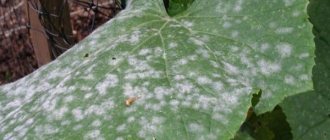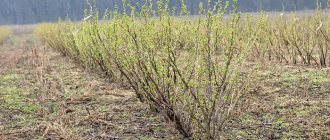Many summer residents wonder why the soil in the greenhouse turns white, because they take such careful care of it, fertilize it, water it and weed it. So what is the cause of green soil, mold and white residue?
The most common causes are excessive soil moisture, pests and improper care.
The soil is sick for several reasons:
- If you water the soil endlessly.
- With increased soil acidity.
- When the greenhouse is poorly ventilated or absent at all, resulting in increased humidity in the room.
- If you add a lot of fertilizers to the soil.
These reasons can be combined with each other.
Pests, insects and diseases
Very often, pests lay their larvae in the soil, where they remain for a long time. If this problem is not dealt with, the number of harmful larvae in the soil will only increase. And some conditions can contribute to this, for example, heating the soil in the cold season, etc.
Ventilation diagram in a greenhouse.
The most common pests include:
- wireworms,
- cabbage flies,
- mole cricket,
- spider mite and others.
Other types of soil diseases include infections of vegetable crops - these are various mold spores and fungal diseases that can also penetrate the soil and cause its contamination. Many microorganisms are able to penetrate not only into the soil, but also constantly remain on the frame of the greenhouse itself (especially if it is made of wood). Therefore, if you carry out measures to disinfect the soil, it is necessary to touch all parts of the greenhouse in order to completely prevent the re-production of harmful microorganisms.
Common soil diseases:
- clubroot;
- late blight;
- spots on leaves;
- macrosporiosis;
- peronosporosis.
The appearance of mold
The soil in the greenhouse is saturated with a variety of microorganisms, which in normal soil conditions must be in balance. Any change causes this process to fail. As a result, mold begins to develop and a white coating forms on the soil in the greenhouse. Disruption of the natural balance contributes to the development of harmful microflora. Several factors contribute to the appearance of mold:
- Increased temperature inside the greenhouse and lack of quality ventilation;
- Excessive soil and air moisture;
- Lack of ultraviolet rays;
- Failure of sealing in the drip irrigation system, leading to constant stagnation of liquid. Closed ground conditions and high humidity provoke the activation of fungal infections.
To eliminate the problem, you should monitor the amount of moisture when watering. Ventilate the room regularly. If there is a lack of sunlight, it is necessary to additionally illuminate the greenhouse with special ultraviolet lamps. After harvesting, thoroughly clean the greenhouse space. If necessary, disinfect not only the soil, but also the greenhouse structure.
Soil waterlogging
Simple solutions for soil care.
If the soil is waterlogged, then in the near future you may find algae, fungus and mosses in your beds. This is also facilitated by warm air in the greenhouse. Particular insidiousness may come from groundwater, which may be located in the area of the greenhouse. Often, the owner of a greenhouse may not be aware of this and water his plants as usual, resulting in excessive moisture, which in turn leads to soreness and greening of the soil.
How to distinguish moss from algae? These two species can often be confused, but they have distinctive features:
- When the greenhouse lighting is poor, moss appears on the plants and soil.
- But if there is enough light in the greenhouse, then we can talk about the formation of algae.
Why is this raid dangerous?
The appearance of mold or salt on the ground does not threaten the plants with death. But this problem will definitely affect the quantity and quality of the fruits obtained.
Increased soil moisture is a favorable environment for the development of fungal infections and diseases (late blight, clubroot, macrosporiosis, downy mildew, etc.), as well as for the appearance of harmful insects (wireworm, cabbage fly, spider mite, mole cricket, etc.).
The formation of plaque on the ground is dangerous only for young seedlings. It does not have a sufficiently developed root system to absorb excess moisture. Therefore, when spraying appears, the seedlings will most likely begin to rot. And the resulting mold impairs the regeneration of the crop and reduces the amount of oxygen supplied to it. Most often, the development of fungus around young planting material leads to its rapid death.
Causes of white plaque and measures to get rid of it
White coating is a yellowish crust consisting of salt. It can form for the following reasons:
- If the soil composition is considered mechanically heavy.
- Difficult soil drainage.
- With poor or scanty watering.
- Too much fertilizer in the soil.
- A large amount of fertilizing in the soil.
- The composition of irrigation water may contain large amounts of chlorine, calcium or magnesium.
- Dry air.
- Fungus or mold.
Ways to combat plaque.
The appearance of green and white deposits in the soil is associated with excessive waterlogging of the soil.
You can get rid of white deposits on the soil in different ways:
- For example, you can sprinkle the surface of the soil with expanded clay. It is on it that a white dried sediment will appear; from time to time the expanded clay needs to be washed and returned to its place again.
- Sprinkle the top layer of soil with river sand and loosen it more often. This is very beneficial for the root system of plants.
- You can remove the top layer of soil and add leaf humus.
- Remove the top layer of soil and fill in a new one.
- Purchase a soil deoxidizer from a specialty store. Remove the top layer of soil and pour the deoxidizer deeper.
- Water the soil with softened water. To do this, use a special filter. You can put a bag of peat in a bucket of water. If possible, water should be passed through a layer of peat, then the salts will be adsorbed.
Mold Removal Methods
If the soil in the greenhouse has turned white as a result of the formation of mold, then a set of measures is taken to combat the fungus. It is necessary to increase the alkaline carbon index of the soil using mineral compounds. Such procedures will prevent the development of infection. Processing is carried out twice. The break between procedures is 30 days. Another method is to sprinkle the ground in the greenhouse with a powder mixture consisting of wood ash and charcoal in a 1:1 ratio. If plaque is widespread, you can use a copper peat solution (sprinkled under each bush in the greenhouse). Special fungicides such as Fitosporin - M or Fundazol are widely used.
To prevent unwanted vegetation, the development of infections, and soil flowering, it is necessary to observe all agrotechnical and preventive measures. Minimizing problems will allow you to get a bountiful and high-quality harvest. Thus, the owner’s invested work will be fully justified.
Increased soil acidity
To reduce the acidity of the soil, which causes moss and mold to spread throughout the area (and this is detrimental to plants), you need to take the following actions:
- Add tree resin to the soil; this should be done from time to time. But not too often.
- Add lime to the soil.
- Dolomite flour added to the soil effectively eliminates soil diseases.
Norms for soil acidity levels.
It is advisable to add these fertilizers to the soil at the time of digging up the earth, before planting and after harvesting. In this case, the soil in the greenhouse will not deoxidize, causing mosses to stop appearing.
To ensure that plants grow well in the soil and produce a harvest, do the following:
- Sprinkle lime on the soil and do not dig up the soil.
- After this, sow green manure - this is a fast-growing grass.
- After the grass sprouts, plant seedlings of other vegetable crops in the soil.
- After the seedlings have taken root, the grass is mowed and subsequently used as mulching material.
Correct crop rotation in the greenhouse
In order for plants to grow well in a greenhouse, proper crop rotation must be observed. To do this, you need to know which plants like well-fertilized soil and which less fertilized ones.
Therefore, plants are divided into the following groups:
- Plants with low fertilizer consumption.
- With average fertilizer consumption.
- With high fertilizer consumption.
It is necessary to be able to alternate planting of such plants. For example, tomatoes consume a lot of fertilizers, and after harvesting, other plants with the least fertilizer consumption can be planted in this place.
Some tips for proper crop rotation.
Do not grow one variety of vegetables in the same place for years, alternate crops, this will avoid soil fatigue.
Select suitable neighbors from vegetable crops. For example, tomatoes and sweet peppers coexist in one garden bed. And basil planted nearby will also improve the taste of tomatoes, at least that’s what avid gardeners say. But it’s best to plant dill next to cucumbers.
There are plants that can repel parasites. For example, calendula and marigolds repel aphids and nematodes. And nasturtium whiteflies and aphids. To avoid soil diseases, use only high-quality planting material and fertilizers.
At the end of the season, do not neglect cleaning the planting material and cleaning the greenhouse. Remember that in a polycarbonate greenhouse, plants grow better and the soil suffers less.
Very often, pests lay their larvae in the soil, where they remain for a long time. If this problem is not dealt with, the number of harmful larvae in the soil will only increase. And certain conditions can contribute to this, for example, heating the earth in the cool season, etc.
How to Replace Topsoil
If you do not regularly ventilate the greenhouse, various diseases appear in the soil, from greening of the soil to the growth of parasite larvae. Stagnant warm air contributes to this. Therefore, it is very important to ventilate the greenhouse even in cold weather.
If the soil is already diseased, then the top layer of soil needs to be replaced. What do I need to do? And how to replace it correctly without harming the plants?
The process of removing the top layer of soil occurs as follows:
- The soil layer is removed to a depth of 30 cm.
- After this, the soil is covered with lime.
- The lime is slaked with water only the next day.
- Thus, the soil is left for 3 days.
- The lime is then covered with whitewash.
- Only then can you cover it all with a new layer of soil.
https://1poparnikam.ru/www.youtube.com/watch?v=LHxV1trbi54
You can mulch the soil with the following materials:
- sawdust;
- leaves;
- compost;
- grass;
- straw, etc.
Soil preparation is carried out before mulching. Mulch previously prepared and loosened soil.
Planting seedlings in a bed
Reviews:
Irina Goritskaya
writes: Tatyana, thank you very much for your regular advice! As always, like it. Your channel is just a godsend for me. I recently began to engage in natural farming and methods and tips that do not involve chemicals and save space and effort are very important to me.
Olga Grafova
writes: Hello, Tatyana! what region do you live in? And also, you plant in April, doesn’t the greenhouse freeze?
Vyacheslav Shlyaga
writes: THANK YOU! I’ll try it this year, I have no doubt about its effectiveness.
Tattiana Osadchuk
writes: thank you very much, I took your advice into account
Venus Safina
writes: I would really like to know the date and month when you are filming.
Fourthly, add wood ash to the soil at the rate of a liter jar per 2 sq.m. Scatter it evenly over the soil and cover it with a flat cutter to a depth of 10-15 cm. If this amount of ash is not available, then save it for adding it to the planting holes. In the meantime, buy torfolin (pressed peat). Fill 5 liters of peat with a 0.1% solution of copper sulfate, leave for 5-6 hours and then stir thoroughly until smooth. Discard all large inclusions. Then add 100 g of dolomite flour and mix again. Scatter this mixture over the soil in a thin layer. After 2 weeks, repeat the procedure again.
In order to prevent mold from growing in the greenhouse, first, it is worth carrying out a number of preventive actions - ventilate, monitor humidity and, if possible, check for its presence in those places where mold may appear, saving by emergency measures at the first suspicion of its appearance. Sunlight must penetrate into the greenhouse.











